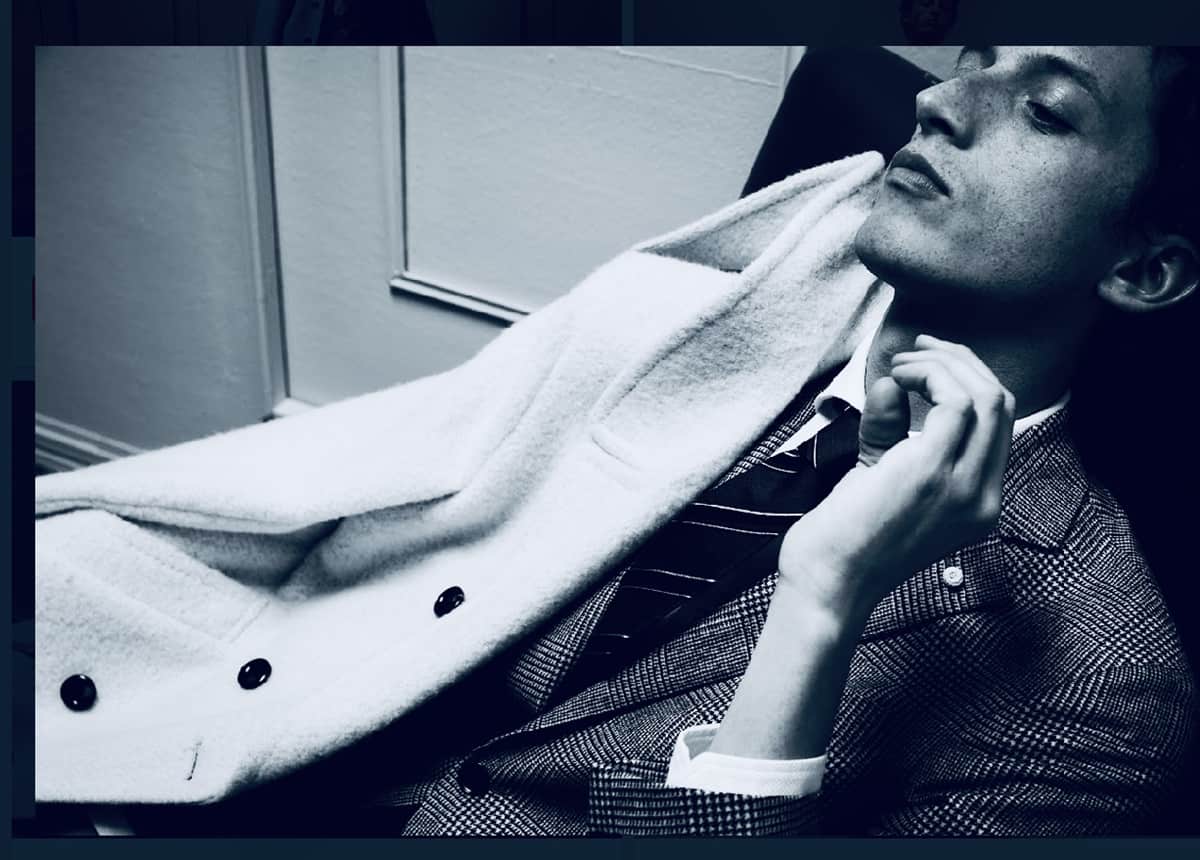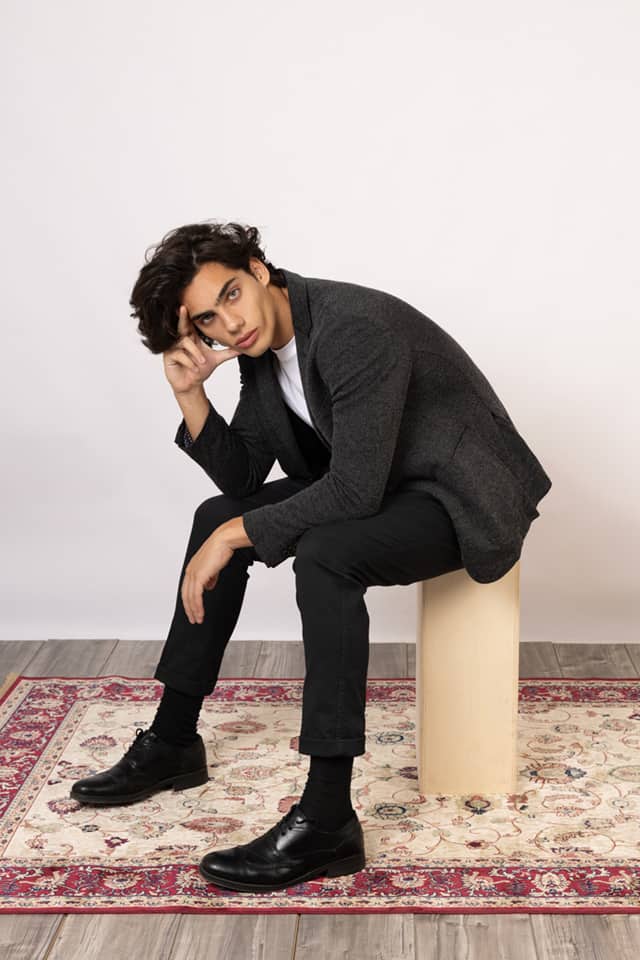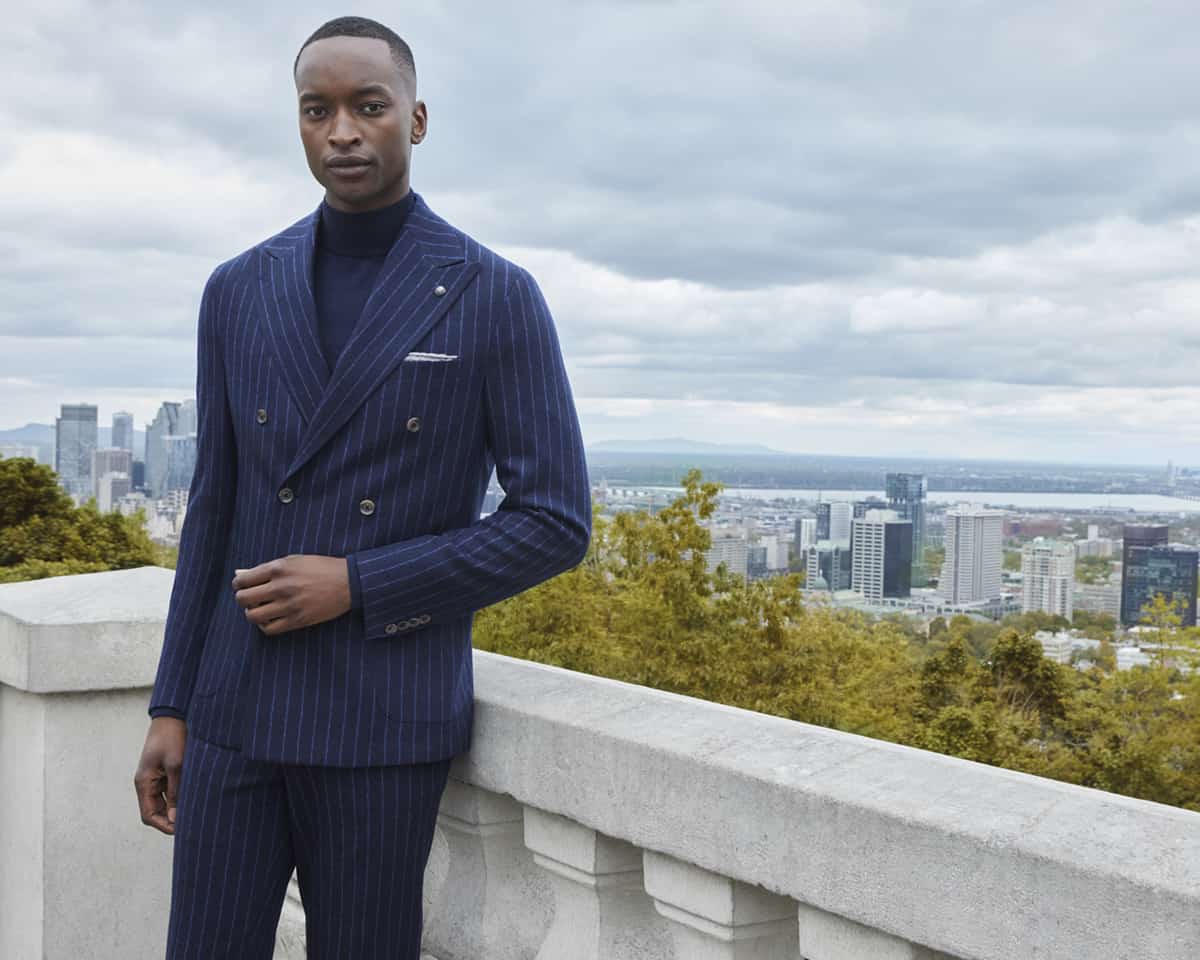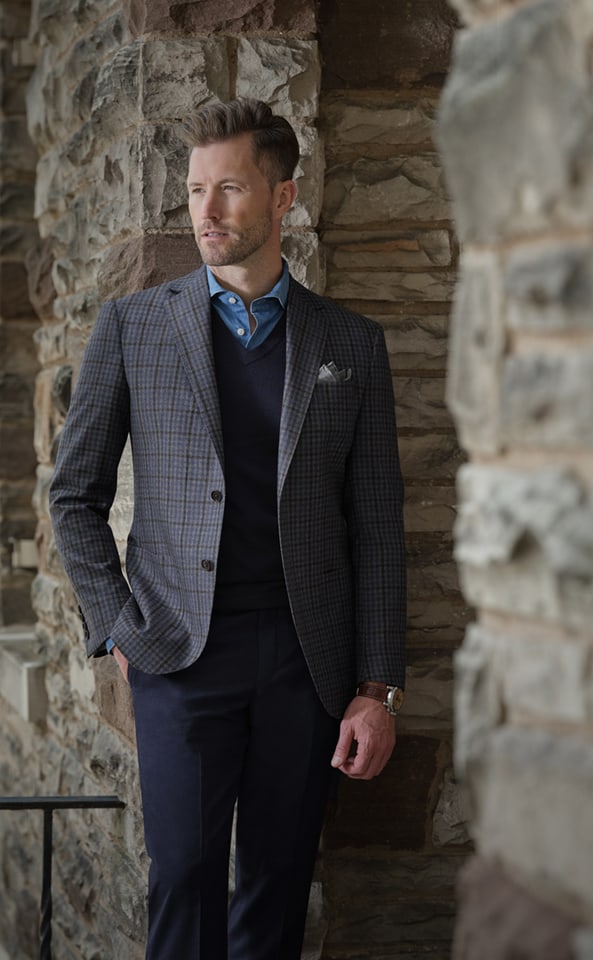FROM OUR NOVEMBER ISSUE: TAILORED CLOTHING. BE PREPARED TO CHASE!

DAN ORWIG, PRESIDENT, PEERLESS
How’s tailored clothing business at retail?
Although sales are flattening to a more reasonable level compared to 2022 (a record-breaking year), tailored clothing remains on the better side of high-performing categories at retail. Consumers continue to show how savvy they can be in their purchasing ways. With certain headwinds in front of us, be it geo-political, government shutdowns, inflation, student loans… there’s always something! As an industry, we continue to push through obstacles one step at a time.
What are higher performing stores doing right?
Our retail partners who have invested in the dress-up category, who offer beautiful, creative and innovative assortments, are doing quite well and will continue to perform through any headwinds. We want to help our retail partners show the consumer value, whether that’s with the latest fashion trend, the highest quality fabrics or simply the best fitting garments. You can see this on the floors today: early fall assortments look amazing!
As the largest tailored clothing maker in North America, how is Peerless approaching the business today?
With cautious optimism. On core product, we will always have a robust inventory level. But on fashion, we’d rather sell out early than own too much inventory. Sell out and chase. We want to support our retail partners and their objectives of increased turn and higher AUR’s. We want the customer to keep seeing newness and wanting more. It’s by no means easy out there, considering the past 18 months have been so strong. We need to stay close to the business and monitor it by buying smart and managing inventory.
Can you provide some fashion specifics?
We’re seeing nice activity in sport coats: softer shoulder, half lined, open patch pockets. Consumers are getting very comfortable with this look. Also performing well: rich colors including burgundies and greens.
In suits, we believe the market is staying dressy. We love double breasted styles, and initial reads have been good, from a relaxed DB sport coat to a DB pinstriped suit. As designers and merchants, we talk a lot about the looser models appearing on designer runways. We see it in several luxury brands (even more in women’s) and we’re loosening up a bit for fall 2024. Nothing too extreme but easing the thigh and calf so the pant shows more drape and flow. In some of our products, we’re also easing out the jackets.
How’s the supply chain situation?
Looking ahead, it seems more manageable— both the textile and factory components. Container costs are back to reasonable levels and availability.
What is your key current goal?
To continue working closely with all our retail partners to ensure they have the appropriate inventory to maximize business while keeping the AUR’s high and the newness flowing.

MARK SPERO, VP, LUBIAM USA
How’s recent tailored business in the stores?
Last year was record-breaking and 2023 business was strong until April. Going into fall ’23, our better stores are off to a nice start! Soft jackets in jersey knits, garment dyed in fun colors (autumn greens, pumpkin), both solids and patterns. More than ever these days, it’s becoming a fashion business. Customers already have the basics; stores willing to take more risks are doing the best.
Are you worried about the economy? How long can a positive trend continue?
I think better specialty stores will continue to thrive. It’s not just about the economy: these stores have really stepped up their assortments, their presentation, trunk shows, marketing, and service, and they’re moving away from sales. Our current retails average $895-$995 for LBM, $1095-$1295 for Luigi Bianchi, value pricepoints for Italian goods.
Can you comment on the current supply chain situation?
Fall ’23 deliveries were much better: we were 85 percent delivered by end-September. Spring ’24 deliveries should be even better: we increased pre- buys of fabrics by 30-40 percent.
How are you positioned for fall ’24?
We’re 65% ready and will be set to show end November/December. Although delivery challenges are greatly mitigated, there are still challenges with some of the mills. Merchants will get better delivery by booking early.
As for fashion direction, we’ll be showing more jersey knits and sweater jackets. Although we’re showing several new models, we expect the best to be a low two-button with patch pockets. The fall ’24 color palette leans toward plums and olives. About 85 percent of our fabrics are exclusives.
Are you showing any of the oversized styles shown on runways?
Everyone’s showing it but our retail accounts are not quite there yet. It took so long for customers to accept a slimmer fit; it will take just as long for loose fits to become the norm.

JACK BANAFSHEHA, ZANETTI
How’s recent business?
Early fall has been somewhat soft compared to last year. Our soft jackets from the ZNT18 and the Zanetti collections have been the best sellers. Suiting sales are flat. For 2024, we’re introducing more assortment in our jacketing lines across all three (ZNT18, Blue and Black) of our collections.
Interestingly, our clients outside the U.S. seem to be doing a bit better than our clients in the U.S. I attribute that to them carrying lighter inventories.
Can you comment on the supply change situation?
It’s actually quite fluid. We’re getting our shipments pretty much on schedule without any issues (so far) compared to last year.
Is it good that retailers are planning to move forward with less inventory and more in-season reorders?
In my opinion, this will not be ideal for their customers since very few if any companies will have fashion items available for reorder. Basics, however, will be abundant.
What do you see as your greatest challenges and opportunities?
I see client expansion as our main goal and growth opportunity. The challenge for everyone is consumer spending. It seems that now more than ever, consumers are being cautious about how much they spend on clothing. But we’ve been through these periods in the past. While this one is a bit different, it too will pass.

NELSON SURIEL, PRESIDENT, JACK VICTOR USA
How is business?
I recently returned from a trip down south to visit with some of our accounts. I got to see about a dozen stores and just about every one of them is off to a good fall season. This is very encouraging, considering that when I landed in Houston, it was 99 degrees. Despite the warm early fall weather, consumers are coming out to buy new fall merchandise. I love to visit our accounts since I get to spend time with not just the store owners but just as importantly the sellers on the floor. In this way, I gather information on what trends they’re seeing and what’s selling well across all classifications.
Can you be fashion-specific on what’s selling in tailored clothing?
Our Comfort Wear collection continues to be our shining star! This is our Jack Victor collection of jersey and knitted fabrics from which we’re able to make soft and comfortable tailored clothing. While the garments are definitely a softer construction, we’re able to make them in a tailored way. The shoulders are clean and the chest doesn’t collapse like you typically see in soft garments. And of course, the fabrics stretch and move with the body.
How would you describe the current supply chain situation?
We see things as back to normal. We’re only as good as our suppliers. We’re fortunate that most of the components we use come from premier Italian suppliers: not just the fabrics but also our canvas chest pieces, linings, buttons, pocketing, etc.
Are your clients being more cautious with inventory levels?
Yes, and we’ve planned accordingly. Not only are our basic in-stock items (solid suits, blazers, eveningwear, trousers) in good stock positions, but we also cut more units in our seasonal fashion stock to be ready for the demand that we anticipate.

TONY MADDOX, PRESIDENT OF SALES, COPPLEY USA
How’s business?
Our business is 45 percent off-the-rack and 55 percent custom. We’ve had very strong early fall business in off-the-rack: we delivered a lot of product early (45 percent before summer shutdowns) and we’re up in both units and dollars. For the month of October, we had 49 scheduled trunk shows.
What are your early fall best sellers?
A classic fit drop six is still our number one selling garment. We’ve been selling 35 percent pleated pants for a long time. In custom, we’re getting some requests for wider legs.
In off-the-rack, we’ve added more soft, unstructured cardigans and other models like bombers. The stores that do best are carefully planning their assortments, marketing, and events. How are you priced these days? Are price increases a deterrent?
We’re at $1195 retail for an off-the-rack suit and $1095 for a sportcoat. Yes this is a slight increase but an expected one, with increased costs on fabrics, threads, zippers (now three times what they were…) Current prices are accepted by retailers because they’re able to elevate their offerings.
Are you concerned that retailers plan to work with less upfront inventory?
No. Our business model is structured with built-in replenishment options. We have two off-the-rack replenishment programs: seasonal and perennial. Retailers can select from 21 jackets and 10 suits delivered in 15-18 working days. They can reorder something that’s running low or choose something totally new.
Where will future growth come from?
From finding ways to offer more casual pieces in both off-the-rack and custom. And from offering custom in women’s, a project in the works.

SPIRO ARVANITAKIS, BYRON
How’s recent business?
Despite most stores being up against crazy good numbers from last year, we’ve been blessed with continued growth. Our business is far above pre-pandemic levels. Most of the action is in fancy sport coats and elegant suits, primarily worn to social occasions. The wedding business has certainly not slowed down!
Overall, it seems that financial district business dressing has not kicked in yet. I take this as an exciting opportunity for significant growth once there’s a bigger return to the office. I truly believe this will be our next wave to ride. As for supply chain issues, we’re actively increasing our production in North America with garments made in Mexico.
Can you describe Byron’s unique business model?
Our business model is entirely based on in-season stock orders. We do not ask for any upfront orders. Our stores buy only what they need when they need it.
We’ve recently increased our stock levels in short sizes and large sizes. For many stores today, a short size is not a fringe size.
We stock around 70,000 suits and sport coats in 26 sizes and several models. I encourage our stores to “buy less and sell more.” Our best account currently hangs half the number of sleeves but through constant reorders, he now sells more than ever. His annual retail sales are more than one million dollars of Byron alone, while maintaining a margin of over 65 percent. So it’s possible: More sales with less inventory means more profit!

ALIYA MOREHEAD, DESIGNER, SAMUELSOHN
How has early fall clothing business been in the stores?
Tailored jackets with softer construction reign supreme. Color continues strong, providing customers with compelling reasons to buy. Even with softer construction, the jackets have a dressier appearance, featuring flap pockets instead of patch. Although there’s been some price resistance to fashion suits, we believe this category will soon return to more in-season selling.
What differentiates those stores doing well from the others?
Doing best are retailers who are resourceful and flexible, who understand that inventory does not have to be physically in the store to be sold. Stores that provide customers with the option to purchase off-the-rack, made-to-measure, and in-stock items. Stores that present customers with a comprehensive ‘return to the office’ look, even mixing brands. How do you see the current supply chain situation?
The supply chain is getting better in the sense that we have adapted to longer lead times and limited resources. It all depends on the yarns; most mills have capacity to manufacture fabric. To what extent will retailers be able to get mid-season reorders?
We’re doing some opportunistic cuttings in-season, allowing retailers an opportunity to buy more. This helps maintain factory operations during slower periods and provides more product offerings for retailers with limited investment on their part.
What do you consider your greatest challenges and opportunities?
Our greatest challenge is to manage risk in the market right now. We have an opportunity to expand in categories closest to our core, such as overcoats and trousers. But our biggest opportunity is that we’re in an era where customers prioritize quality over quantity, and that’s what we stand for as a brand. The expression, fit, and craftsmanship of our garments cannot be duplicated.








